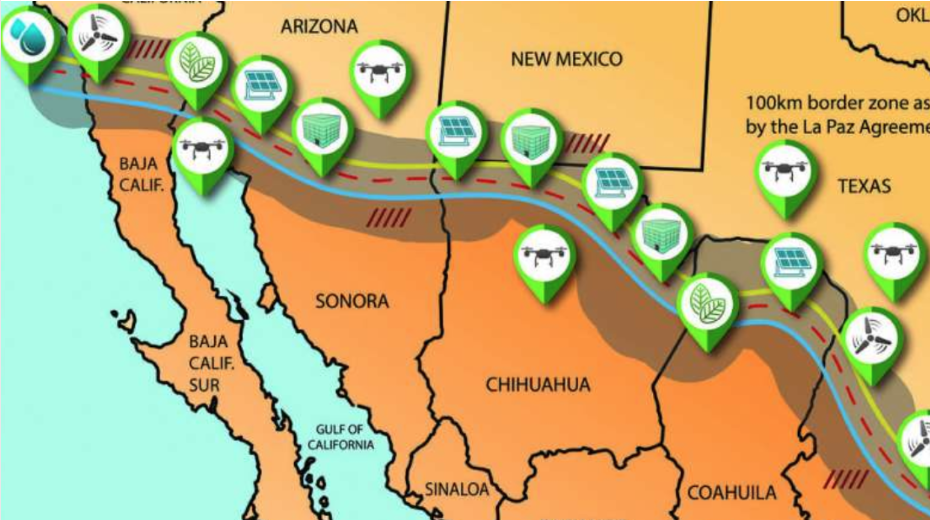Why I’m Optimistic About Replacing Fossil and Nuclear with REAL Clean Energy

While it sounds deeply pessimistic, I was actually extremely encouraged to read this quote by ecopreneur Paul Hawken in Sierra Magazine (part of a long excerpt from his new book, Regeneration):
Most of the energy we use, whether it be coal, gas, or oil, is wasted, meaning the energy does no useful work. Energy, in its thermal or electrical form, powers systems that are badly designed and poorly engineered, including our buildings, cars, and factories. According to the National Academy of Engineering, the United States is approximately 2 percent efficient, which means that for every 100 units of energy employed, we accomplish two units of work.
Why? Because if we are wasting 98 percent of our energy that means all we have to do engage in a drastic campaign to increase efficiency and conservation. I’d guess that if we can get our efficiency up to 50 percent, we’d never have to drill for more oil and gas or mine for coal and uranium. If we can reach 80 percent, we’d be actively reversing catastrophic global heating. While the technological challenges are steep, they’re not insurmountable—and even if we can go from 2 to 10 percent efficient (and THAT I think we can do easily and relatively quickly, since other parts of the world, including Northern Europe, use far less energy per capita than we do in the US), the changes will be enormous. A lot of this can be done just by thinking different. For example, most of the fuel a car consumes is to move the car itself, not the passengers. If we can cut the weight of a car in half, or carry more people at a time, more of the fuel goes to moving the people and less to moving the vehicle.
Hawken says 82 percent of our carbon output is from burning coal, oil, and gas. So, since we’re wasting 98 percent of the energy those combustion reactions produce, being more efficient will lead directly to less carbon going into the air and sea.
He concludes with a clarion call to address social justice here and now, as a necessary step to cleaning up our energy act:
To reverse global warming, we need to address current human needs, not an imagined dystopian future.
If we want to get the attention of humanity, humanity needs to feel it is getting attention. If we are going to save the world from the threat of global warming, we need to create a world worth saving. If we are not serving our children, the poor, and the excluded, we are not addressing the climate crisis. If fundamental human rights and material needs are not met, efforts to stem the crisis will fail. If there are not timely and cumulative benefits for an individual or family, they will focus elsewhere. The needs of people and living systems are often presented as conflicting priorities—biodiversity versus poverty, or forests versus hunger—when in fact the destinies of human society and the natural world are inseparably intertwined, if not identical.
Social justice is not a sideshow to the emergency. Injustice is the cause. Giving every young child an education; providing renewable energy to all; erasing food waste and hunger; ensuring gender equity, economic justice, and shared opportunity; recognizing our responsibility and making amends to myriad communities of the world for past injustices—these and more are at the very heart of what can turn the tide for all of humanity, rich and poor, and everyone between. Reversing the climate crisis is an outcome. Regenerating human health, security and well-being, the living world, and justice is the purpose.
As Rebecca Harrington has pointed out, “In a single hour, the amount of power from the sun that strikes the Earth is more than the entire world consumes in an year.” Multiplying that hour by 24 hours in a day, 365 days in a year, we learn that just from the sun, we have 8760 times as much energy coming in as we use. This doesn’t even count wind, hydro, geothermal, and many other promising, truly green technologies that can be designed and deployed in ways that minimize harmful impact (that’s another area where we need to work; not all alternative energy deployments are well-thought-out). I personally favor small-scale, decentralized installations that are designed with the particular site in mind and are easy and clean to install, service, and eventually disassemble–along with solar and wind on non-forest locations that have already been built upon. Building and vehicular rooftops, parking lots, and highway median strips are all very promising places for green energy deployment, to name a few possibilities.
In short, once we make the transition–and we absolutely need to–we can live perfectly well without the dirty and destabilizing fossil and nuclear technologies we currently rely on–and the first step is getting more work out of the energy we’re already using.

